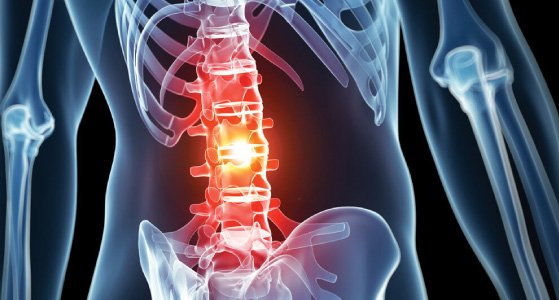Introduction
Disc degenerative disease is common at the L4-L5 & L5-S1 levels is a common condition that can cause various symptoms such as pain, tingling, and limited mobility. While surgical options exist, non-surgical treatments have gained popularity due to their effectiveness and minimal invasiveness. In this article, we will explore some of the non-surgical treatment options available for Disc Degenerative Disease at the L4-L5 level, including transforaminal epidural injection, ozone nucleolysis, platelet-rich plasma (PRP) therapy, and prolotherapy.
Transforaminal Epidural Injection : Transforaminal epidural injection is a minimally invasive procedure that involves delivering anti-inflammatory medication directly into the epidural space near the affected nerve roots. This injection aims to reduce inflammation and alleviate pain caused by nerve impingement. A study conducted by Ghahreman et al. (2018) showed significant pain relief and improved functional outcomes in patients with lumbar radicular pain after receiving transforaminal epidural injections.
Ozone Nucleolysis : Ozone nucleolysis, also known as ozone discectomy, is a non-surgical treatment option that utilizes ozone gas to shrink and dissolve the herniated disc material. This procedure has shown promising results in reducing pain and improving disc height. A study by Zhang et al. (2019) reported that ozone nucleolysis was effective in improving pain scores and disability levels in patients with lumbar disc herniation.
Platelet-Rich Plasma (PRP) Therapy : PRP therapy involves using the patient’s own platelets, rich in growth factors, to promote tissue healing and regeneration. In the context of L4-L5 disc degenerative disease, PRP injections aim to stimulate disc cell repair and reduce inflammation. A systematic review by Choy et al. (2019) highlighted the potential of PRP therapy in reducing disc degeneration and improving clinical outcomes.
Prolotherapy : Prolotherapy, or regenerative injection therapy, involves injecting a solution (typically containing dextrose) into the affected ligaments and tendons to promote tissue repair and strengthening. While there is limited research specific to prolotherapy for L4-L5 disc degeneration, a study by Rabago et al. (2019) suggested that prolotherapy might be effective in reducing low back pain and improving function in patients with chronic musculoskeletal conditions.It’s important to note that non-surgical treatments may not be suitable for all patients, and individualized treatment plans should be developed in consultation with a specialist. Additionally, lifestyle modifications, including regular exercise, a balanced diet, and avoiding smoking and excess weight, can contribute to the overall health and resilience of the spine.
AT ALLEVIATE
Patients are thoroughly evaluated clinically and radiologically, following which they usually undergo Transforaminal Epidural Injection alone or in combination with Ozone nucleolysis of the dehydrated disc. Following this they are subjected to prolotherapy for strengthening of the ligament bone interface. Interventions are coupled with a spine strengthening programme overseen by the Physiotherapy team.
Conclusion
Disc Degenerative Disease at the L4-L5 level can cause debilitating symptoms, but non-surgical treatment options like transforaminal epidural injection, ozone nucleolysis, PRP therapy, and prolotherapy offer viable alternatives to surgical intervention. These treatments have shown promising results in reducing pain and improving functional outcomes. However, it is essential to consult with a qualified healthcare professional to determine the most suitable treatment approach based on individual needs and medical history.
References
- Ghahreman, A., Ferch, R., Bogduk, N. (2018). The efficacy of transforaminal injection of steroids for the treatment of lumbar radicular pain. Pain Medicine, 19(3), 490-496. doi: 10.1093/pm/pnx046.
- Zhang, X., Wang, J., Xu, T., Yuan, Y., Xu, Y. (2019). Ozone Nucleolysis for Lumbar Disc Herniation: A Meta-Analysis of Randomized Controlled Trials. Pain Research and Management, 2019, 8943018. doi: 10.1155/2019/8943018.
- Choy, W., Cho, S., Lee, D., Lee, S. (2019). Platelet-Rich Plasma Therapy for Painful Degenerative Disc Disease: A Systematic Review and Meta-Analysis of Randomized Controlled Trials. BioMed Research International, 2019, 7538604. doi: 10.1155/2019/7538604.
- Rabago, D., Nourani, B., Prolo,therapy for chronic musculoskeletal pain, American Family Physician, 100(3), 168-175. PMID: 31408135.



